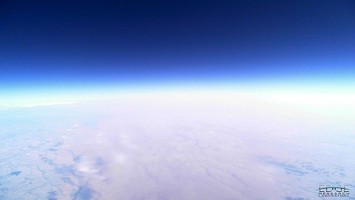High Data Rate Digital Transmission (Making History)
EDGE Flight 2 was, more than anything, a proof of concept and test of proprietary technologies. Both the 900MHz communications system and the CHDK-Hacked Canon A480 have been proven repeatedly as they are commonly included in payloads. However, we were testing technologies and capabilities never before successfully utilized in a privately-funded HAB flight.
Our primary objectives were (bold items are Amateur HAB firsts):
✓ Demonstrate high-performance computation functionality in a "near-space" environment
✓ Demonstrate high-data rate bi-directional digital communication (>= 1Mbps)
✓ Demonstrate live-to-web high-resolution images (1920x1080) (live.edge-rl.org)
✓ Demonstrate live-to-web tracking (live.edge-rl.org) of Data
✓ Operate backup tracking technology, including GPS-independent tracking systems
✓ Integrate airborne support into launch and recovery operations (Cessna 178)
We fulfilled every primary objective and had a bonus with the inclusion of the HackHD 1080p Camera, which was posted on SparkFun a week before our flight. Be sure to check out the HackHD page for a full rundown and a sample of the video quality.
The true first for any amateur level HAB was the high-data rate bi-directional communication. This fed tracking information and live images directly to our launch station and then to the Live website. Needless to say, this is exciting news for a young startup's second flight ever. This system also pushed the limits of computational power flown on a privately-funded HAB with a liquid-cooled dual-core Linux computer serving as the brains of the system.
Historically data has been transmitted over a low data rate connection (9600 bps) using the 900MHz band, or at even lower rates using Amateur Radio technology. That means strings of NMEA data, payload data and (on rare occasion) low-resolution images could be transmitted. Although cool, the images have not been detailed enough to yield significantly useful data and the data rates currently available to independent research severly limit the ability to retrieve live data from increasingly complex sensor systems.
The live feed was active from 15:17:32 (UTC) until 15:51:34 (UTC). Launch was at 15:30:00 (UTC), so the connection was active for 21:34 minutes of the flight (basically until we hit the jetstream and the antenna did not re-angle appropriately). During that period we "received" almost 500 images, however a number of those were partials or incomplete images.
You can see the full image list of live images that made it from the payload to the web here. The only edits made were adding our watermark to the lower right corner and removing sensitive data (personal and proprietary).
How did it work? As much as we would love to give out every last detail - we aren't about to do that until sometime after we've demonstrated complete functionality over an entire flight. For now, here is a summary of the flow:
Camera capture in Payload →
Microcomputer (primary objective) →
High-rate Transmission (primary objective) →
High-rate Reception →
Upload for Live Streaming on live.edge-rl.org (primary objective)
All we can say is the mission was a resounding success, we cannot wait to get another payload up after applying what we learned during this flight.



